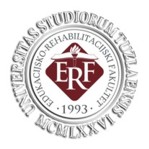POSSIBILITIES AND CONTENTS IN ADDING HORSEBACK RIDING TO RECREATIONAL ACTIVITIES
Keywords:
Horseback riding, Recreational activities, Therapeutic horseback ridingAbstract
The aim of this paper is to present the possibilities and contents in adding horseback riding to recreational activities. Horses - noble animals have always had an important place in human society. The horse is a loyal animal to the human and it is therefore considered to be a helper and a friend of the human. The relationship horses have with people is sometimes unusual and intimate. Horses exhibit a calming and healing effect on most people, and socializing with animals in psychiatry has long been a well-known therapeutic method. Being aware of this nobility and the ability of horses, the human decided to use these virtues for the purpose of health-rehabilitation and recreational tourism in the countryside. This approach also allowed for the most important thing, preserving the tradition of horse breeding and rural life. This is very important to note, as an increasing number of people from urban areas want to get closer to nature and experience the way of life in the countryside. It can be said that equestrian clubs as well as rehabilitation horseback riding associations are constantly developing, expanding and opening their new locations. Recreational activities that include horseback riding or just spending time with horses in nature are also on the rise, and we hope that the number of recreational clubs, tourist offers and all horse-related activities will only grow and expand from year to year.
Downloads
Downloads
Published
How to Cite
Issue
Section
License

This work is licensed under a Creative Commons Attribution-NonCommercial-NoDerivatives 4.0 International License.







